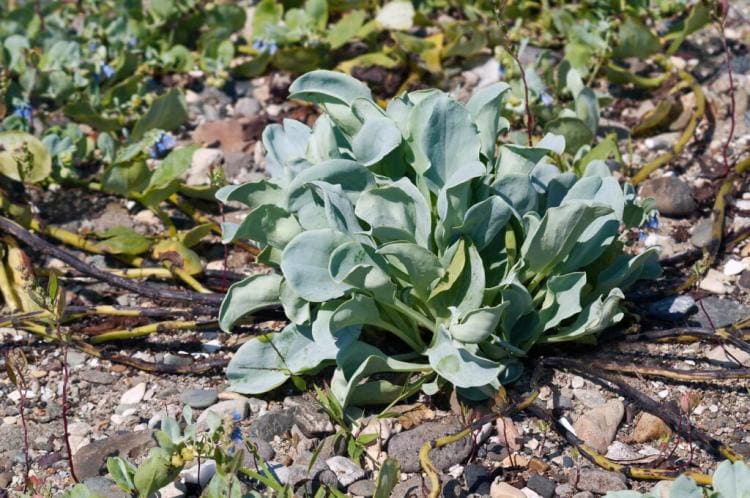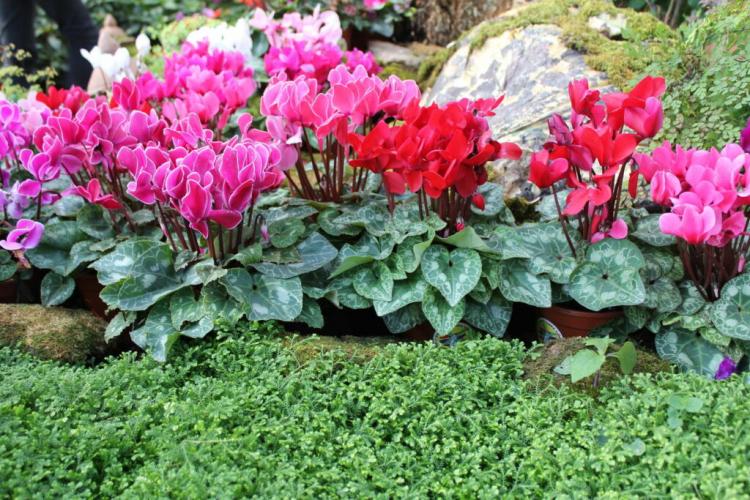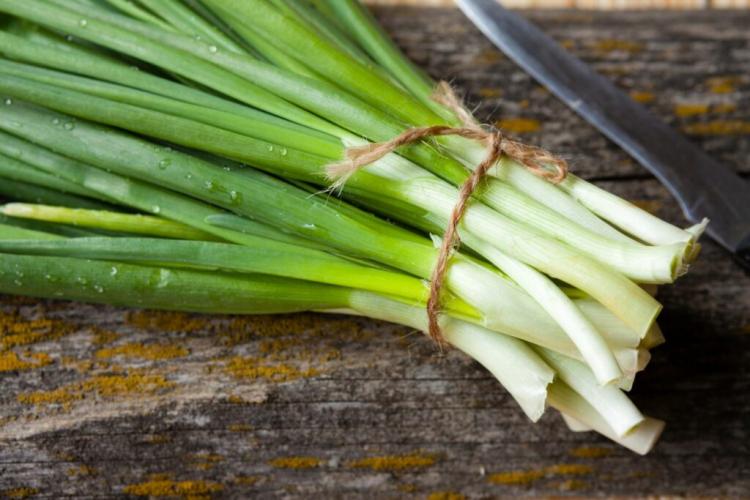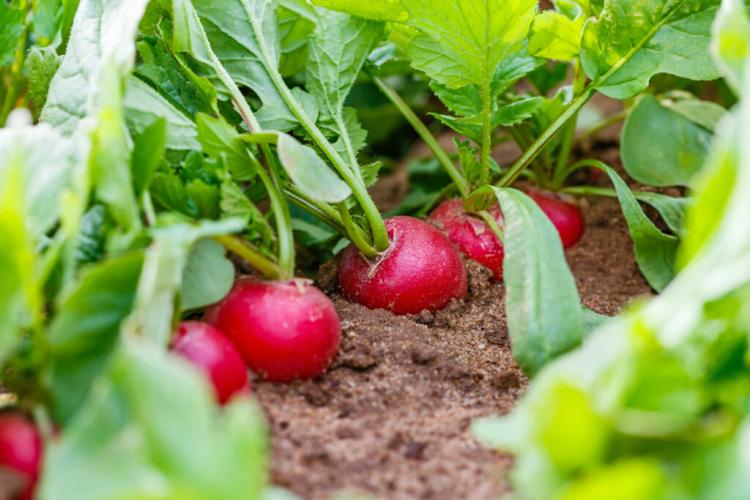Herbs For The Shade: Which Herbs Grow In The Shade?
All plants need light to grow, some less than others. Here you will find suggestions for herbs that grow in the shade and are suitable for the garden or balcony.
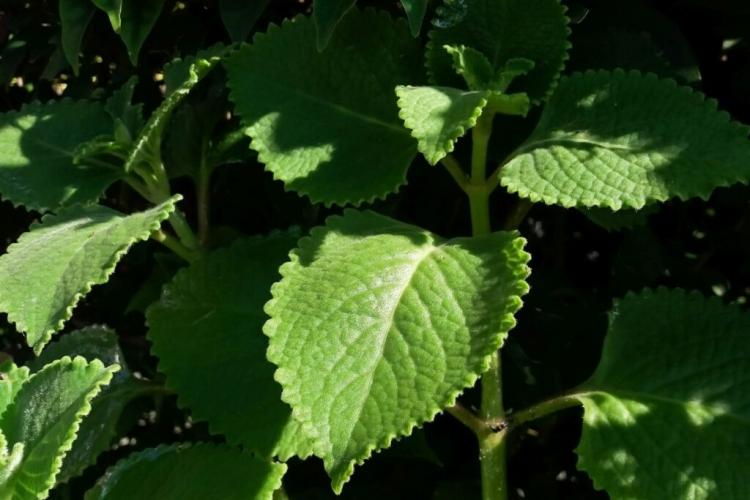
Not many herbs like shade [Photo: SimplyAdrienne / Shutterstock.com]
They are in every garden. The shady spots where nothing really wants to grow. Most of the well-known herbs feel most comfortable in the sun, but apart from oregano, basil and Co. there are also some interesting herbs for the shade.
Herbs for the shade that are hardy
Table of Contents
Below are some herbs that can tolerate shade well and can be grown outside in the garden as they are hardy.
Wild garlic ( Allium ursinum )
When you go hiking in May, the scent of wild garlic is often in the air. His preference for shade is also evident in nature, because he is found mainly in the forest, in rather humid and nutrient-rich locations. If you get wild garlic in your garden, you can avoid the risk of confusion with lilies of the valley, which often arises when collecting in the forest.
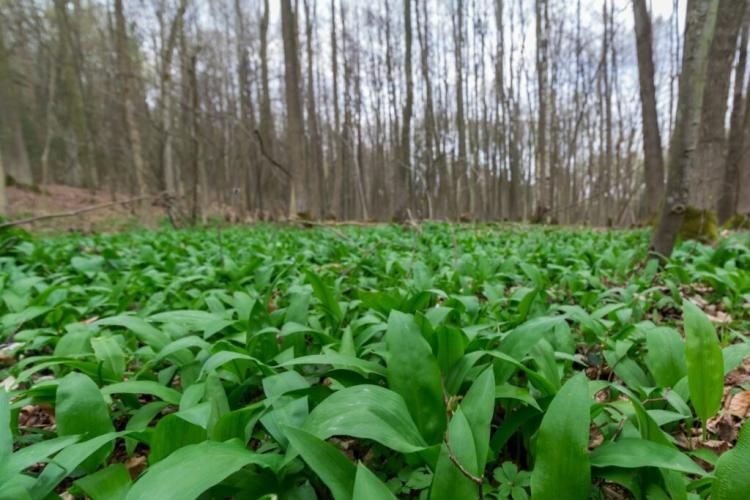
Wild garlic can also be found in nature, especially in shady forests [Photo: matteso / Shutterstock.com]
Perennial borage ( Borago pygmaea )
He is the small, perennial brother of the common borretsch, which is known and used in Germany. The perennial borage prefers loose, well drained soils. Although he likes the sun more, there is also an advantage in planting the herb in the shade. There the leaves become more tender. Thanks to its small size, it is also ideal if you are looking for herbs for a shady balcony. The perennial borage can withstand frost down to -10 ° C, which is why it should be covered with brushwood in very cold winters.
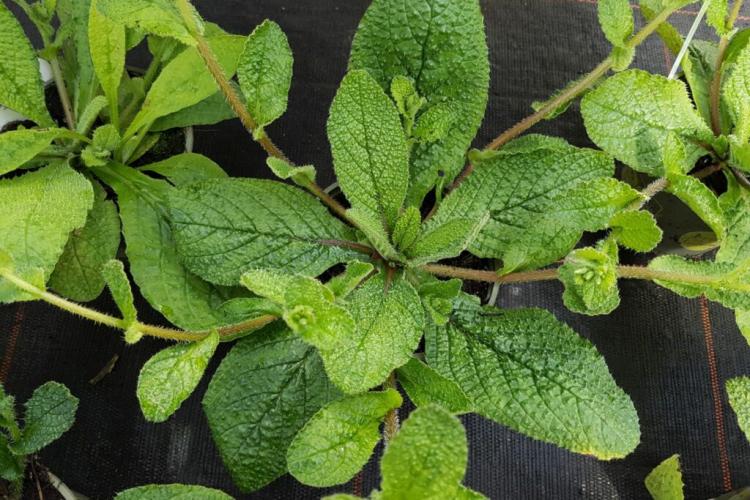
The leaves of the perennial borage can be used just like those of the 1-year-old [Photo: Manfred Rucksackzio / Shutterstock.com]
Woodruff ( Galium odoratum )
You know it thanks to the effervescent powder, jelly or the notorious May punch. Besides wild garlic, woodruff is one of the few herbs that really like shade and cannot tolerate the sun. If it likes its location, which has the best moist, humus-rich and calcareous soil, it can also quickly gain the upper hand and spread out over root runners. This can be prevented by a root barrier.
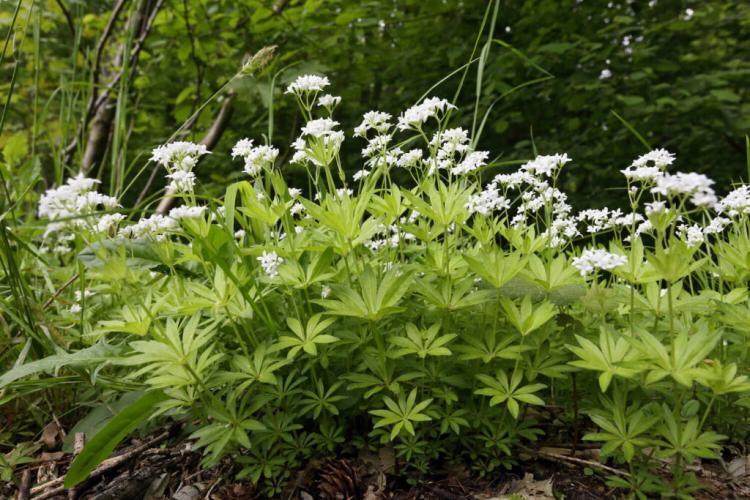
Woodruff awards some bright green drinks and dishes such as soda, jelly or maypole [Photo: Bildagentur Zoonar GmbH / Shutterstock]
Small mountain mint ( Calamintha nepeta )
Unlike peppermints, mountain mints do not form runners and are therefore easier to keep in check. Thanks to its compact growth, the small mountain mint is also one of the herbs for shady balconies. Its leaves can be used like those of peppermint and its flowers act as a real magnet for insects. It prefers a dry and rather nutrient-poor location. Learn how to cut mint.
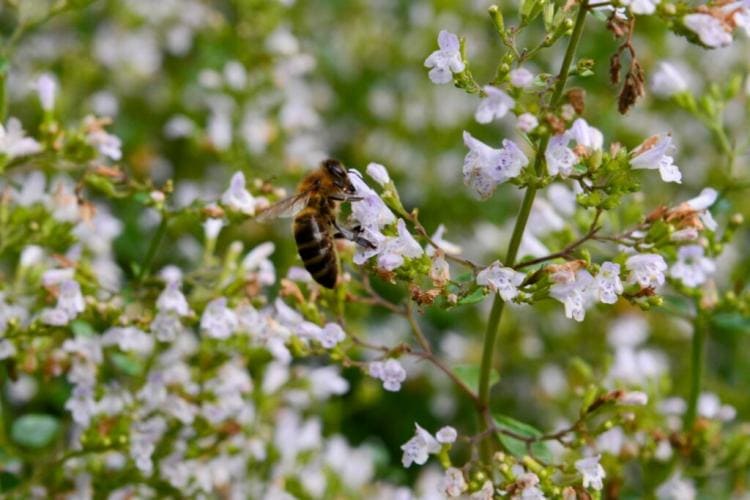
The blossoms of the small mountain mint provide a feast for insects [Photo: FMB / Shutterstock.com]
Watercress ( Nasturtium officinalis )
An evergreen shadow herb whose leaves can be used in many ways in the kitchen is the watercress. The plant is also an important supplier of vitamin C in winter. However, it needs a very moist location, preferably even in flowing water, which can only be found in a few gardens.
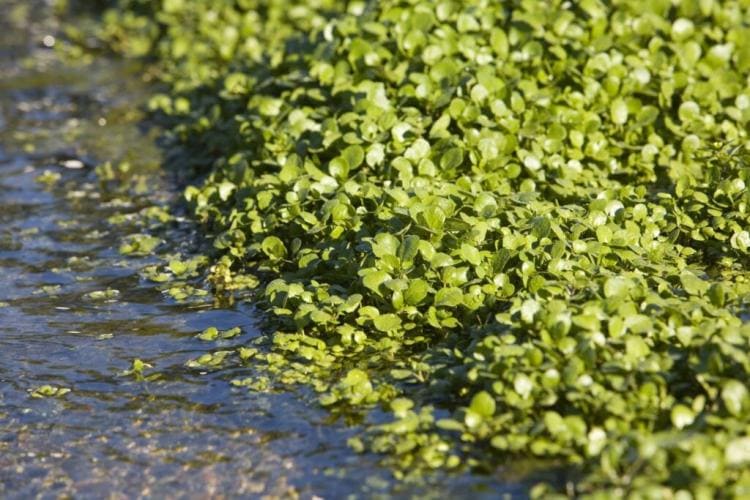
Watercress feels most comfortable in water [Photo: Daisy Daisy / Shutterstock.com]
Wasabi, Japanese horseradish ( Wasabia japonica)
Wasabi is one of the shadow herbs, because its leaves often turn yellow in the sun and it stops growing. In Japan, roots, stems and leaves are used to make the typical paste that goes well with sushi, for example. When it comes to growing, wasabi can be a bit tricky with its demands for cool and humid locations, but if you can reward yourself with homemade wasabi paste, it’s well worth the effort.
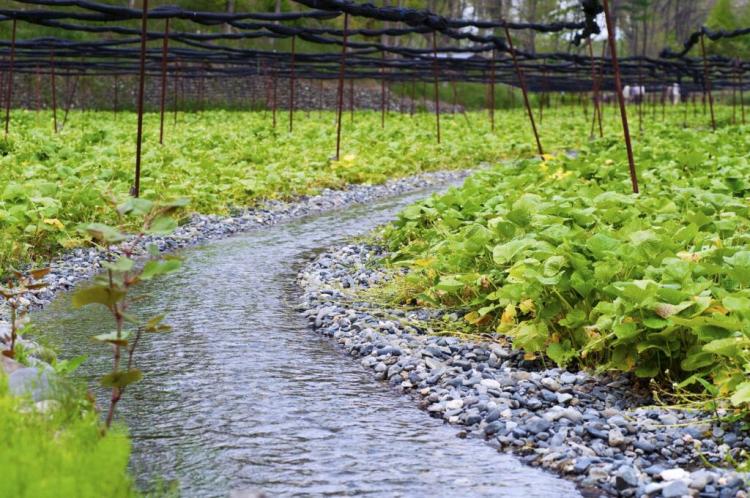
In Japan, wasabi is often grown between water-cooled stones [Photo: Hachi888 / Shutterstock.com]
Yellow sage ( Salvia glutinosa )
Planting sage in the shade for the sun worshiper – is that possible? One of the few types of sage that grows in the shade in rather damp, lime and nutrient-rich locations is the yellow sage. It is also called sticky sage because of its sticky stems. There is no medical evidence for the yellow sage, but its flowers and leaves can still be used for teas, for example. As the only yellow flowering species, it is also an excellent ornamental sage for shade beds.
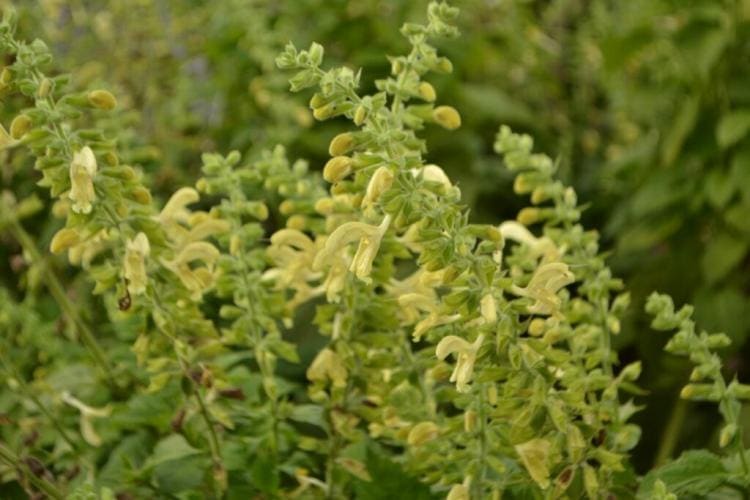
The yellow flowers of the sticky sage [Photo: Edita Medeina / Shutterstock.com]
Tip: Not only does each plant have different demands on the sun, but also on the soil and the supply of nutrients. Some of the herbs mentioned here enjoy a large range of nutrients and can therefore be grown in our Plantura organic universal soil, for example. These include the woodruff, coriander and the mushroom herb. Cardamom and perennial borage are some of the most frugal plants that neither need a lot of sun nor a lot of nutrients. A nutrient-poor substrate, such as our Plantura organic herb and seed soil, is suitable for their cultivation.
Herbs for the shade that are not hardy
Some shadow herbs do not tolerate frost and are therefore more suitable as potted plants and herbs for shady balconies that are protected from severe frost in winter.
Vietnamese coriander ( Polygonum odoratum )
The Vietnamese coriander is an easy to grow herb for the shade that grows quickly in moist, nutrient-rich substrates. Although it feels more comfortable in the sun, it also produces many leaves in the shade, which can be used for salads and soups or for pickling, for example.
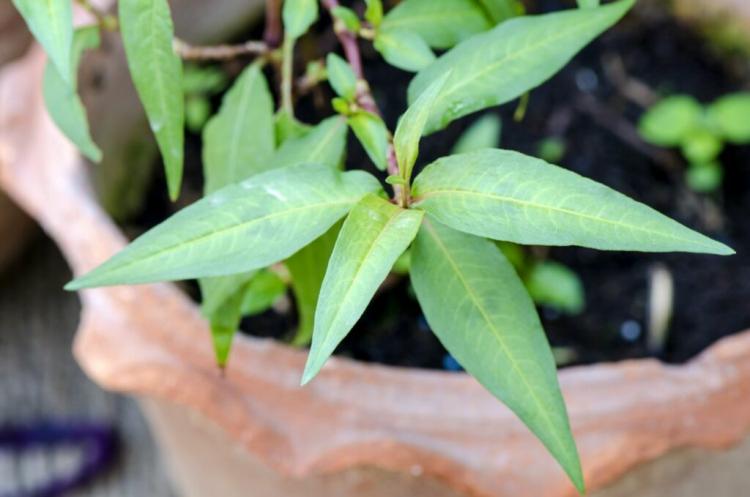
The leaves of the Vietnamese coriander can be used in many ways [Photo: wasanajai / Shutterstuck.com]
Gotu Kula ( Centella asiatica )
The Indian pennywort, which comes from Asia, is mainly known here as a superfood. The herb prefers nutrient-rich, moist locations and contains many important minerals and vitamins. Since Gotu Kula can only withstand temperatures down to -4 ° C, it is advisable to cultivate it in a pot and to overwinter in the house.
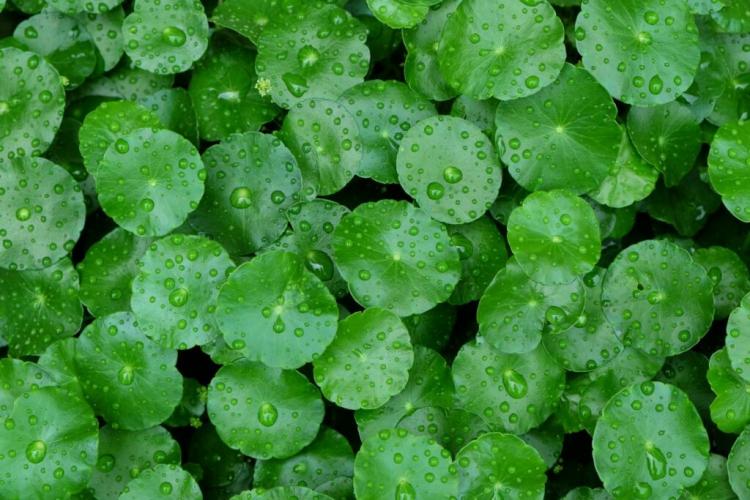
Gotu Kula’s leaves look almost like little umbrellas [Photo: G_Suriyaraks / Shutterstock.com]
Cardamom ( Elettaria cardamomum )
The cardamom is not suitable for year-round outdoor cultivation, as the temperatures there are too low for the herb, which comes from India. As a balcony and house plant, cardamom is undemanding and is one of the herbs that tolerate shady locations well. Although it does not flower, which is why you cannot harvest seeds, its leaves can also be used in the kitchen with their typical taste.
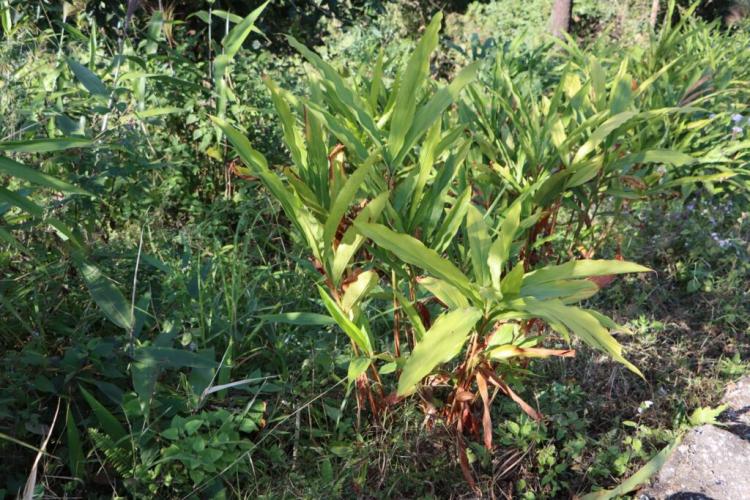
Cardamom thrives in the shade [Photo: Pravruti / Shutterstock.om]
Mushroom Plant ( Rungia klossii )
An unknown but underestimated shadow herb is the mushroom herb. The crisp, thick leaves with the fine mushroom aroma are ideal for salads or to refine dishes. In addition, they contain a lot of nutrients and are very rich in protein for a plant with 3 g protein per 100 g. Even in shady locations, the herb grows lush in humus rich, nutrient-rich substrates; it only stops growing at less than 10 ° C, which is why the mushroom herb should be moved indoors from autumn.

The thick, crunchy leaves of the mushroom herb can be used in many ways in the kitchen [Photo: Martina Unbehauen / Shutterstock.com]
If there are not only shady spots in your garden, you can read on here and find out about herbs for partial shade and herbs for the sun.

